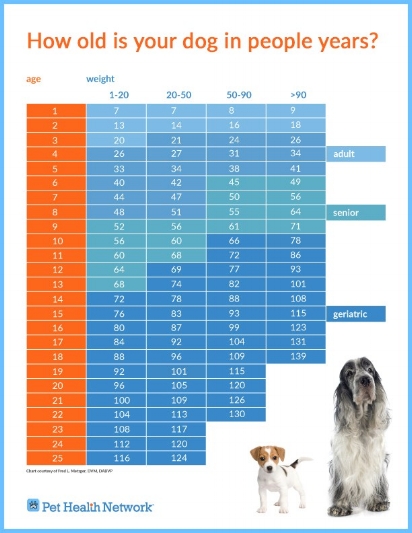Cognitive dysfunction is a syndrome of brain changes which affect dogs and cats “of a certain age”. It can be a very challenging disease to treat because often cognitive dysfunction does not shorten a pet’s life expectancy, but it can significantly interrupt the pets’ relationship with their family and disrupt everyone’s quality of life.
Studies have shown that dogs being asked to complete memory tasks can show signs of brain changes as early as 6 years old. The same amyloid proteins found in people with Alzheimer’s can be found in dogs by the time they are 8-9 years old. Recent studies have shown that 28% of dogs tested between 11-12 years old had lesions in their brain and 68% of dogs 15-16 years old showed lesions. Despite this high indigence rate, the average diagnosis rate for older dogs is only 1.9%! This is likely because most families dismiss these symptoms as normal behavior of aging animals. Although cognitive dysfunction signs are very common, they are not to be mistaken for normal!
Cats are also affected by cognitive dysfunction. Studies of cats older than 11 years have shown similar prevalence of the disease. 28% of cats aged 11-15 years and 50% of cats over 15 years old were diagnosed with cognitive dysfunction in one study. It is suspected the incidence is actually much higher since these were cats that were formally diagnosed with the disease and diagnosis rate is probably very low (as it was in the dog study discussed above).
These amyloid proteins and plaques develop in the brain and can lead to brain atrophy (tissue wasting, similar to muscle atrophy seen on the outside of the body), neuron loss, blood vessel changes, micro-hemorrhages (mini-strokes), and oxidative damage to the brain tissue. Dogs show very similar plaques and perivascular infiltrates to people, making dogs a model for studies of Alzheimer’s disease. The brain changes noted in cats more closely resemble age-related changes seen in the human brain.
Common Symptoms of Cognitive Dysfunction
Senilife® is a supplement containing a unique blend of antioxidants, which work together to help reduce brain-aging behaviors.
- Disorientation
- Altered interactions with people or other pets
- Altered sleep-wake cycles (waking up or pacing at night most commonly)
- Housesoiling
- Going to the wrong side of the door
- Vocalizing at night
- Pacing/Restlessness
- Not responding to previously learned commands
- Decreased interest in playing
- Changes in appetite
- Compulsive behaviors (increased, repeated licking, etc)
- Altered activity levels, depression, apathy (“moping”)
- Increased anxiety or agitation
- Decreased awareness or response to stimuli (“forgetting” why they walked into a room, staring into space)
The primary goal of treatment for cognitive dysfunction is to reduce risk factors that contribute to brain aging and lead to cognitive changes. Secondarily, we can treat specific clinical signs impacting the pets’ quality of life. There are several nutraceutical recommendations, as well as Eastern and Western medications, and diet changes that can be used to help minimize symptoms in cognitive dysfunction.
Common Recommendations for Cognitive Dysfunction
Quality fish oil with high levels of DHA can help protect cognitive function.
- EPA & DHA: Fish oil supplements show to have high levels of EPA (anti-inflammatory) and DHA (neurologic benefit) can be a good addition to a senior pets diet for many reasons. You can easily add fish oil to any diet, however, you should make sure you are choosing an oil that provides high levels of EPA and DHA to ensure your pet is getting the true benefits needed. Napa Valley Holistic Veterinary Services usually recommends Grizzly Salmon Oil or Kronch Salmon Oil.
- Senilife®: Senilife® is a nutraceutical product containing phosphatidylserine, a membrane phospholipid, as well as Gingko biloba, vitamins E and B6 and resveratrol. There are other products on the market with similar goals as well, including Novifit.® Our practice has had the most experience and success with Senilife!®
- Neutricks.®: Apoaequorin is a calcium-buffering protein found in jellyfish. In laboratory trials it showed to improve learning and attention in dogs (even more so than Anipryl, a commonly used cognitive dysfunction medication).
- Melatonin: Melatonin can be used to help regulate sleep-wake cycles to try to get a better night sleep. Speak with your veterinarian about the recommended dose for your pet.
- Chinese Herbs: There are several Chinese herbal medications that can be used to help support a pet with cognitive dysfunction, depending on their examination. These herbal medications are tailored to each patients, but can be useful for anxiety, incontinence, and night-waking.
- Diet Recommendations: Certain foods have been shown to benefit brain health according to Traditional Chinese Veterinary Medicine. These include walnuts and lychee, along with many other foods thought to help boost the immune system and support aging. A home-cooked diet can be tailored to your pet and can be used to support the brain as it ages.
- Pain medications: While pain medications are not specifically indicated in cognitive dysfunction- often our senior patients are experiencing some discomfort from arthritis or other conditions. Making sure that their pain is managed can go a long way to putting their minds at ease.
- Anti-anxiety medications: Anxiety does tend to worsen with cognitive dysfunction and specific anti-anxiety medications can be used to help alleviate any distress.
- Anipryl (Selegiline): Anipryl (Selegiline) is a medication that has been used to treat Parkinsons Disease and has been the only option in veterinary medicine for cognitive dysfunction for some time. While some pets who are diagnosed very early can benefit from this medication, we typically recommend the other treatment options on this list with more success.
Early detection is key to improving a pet’s quality of life with this disease and the goal of treatment is to slow the progression and minimize the effects the symptoms have on their (and your!) daily life. This means discussing your senior pets’ behavior frequently with your veterinarian to intervene early in the process. We can take steps to improve these symptoms (or ideally prevent them from developing), but your veterinarian can only recommend them if they know your pet might be at risk.




